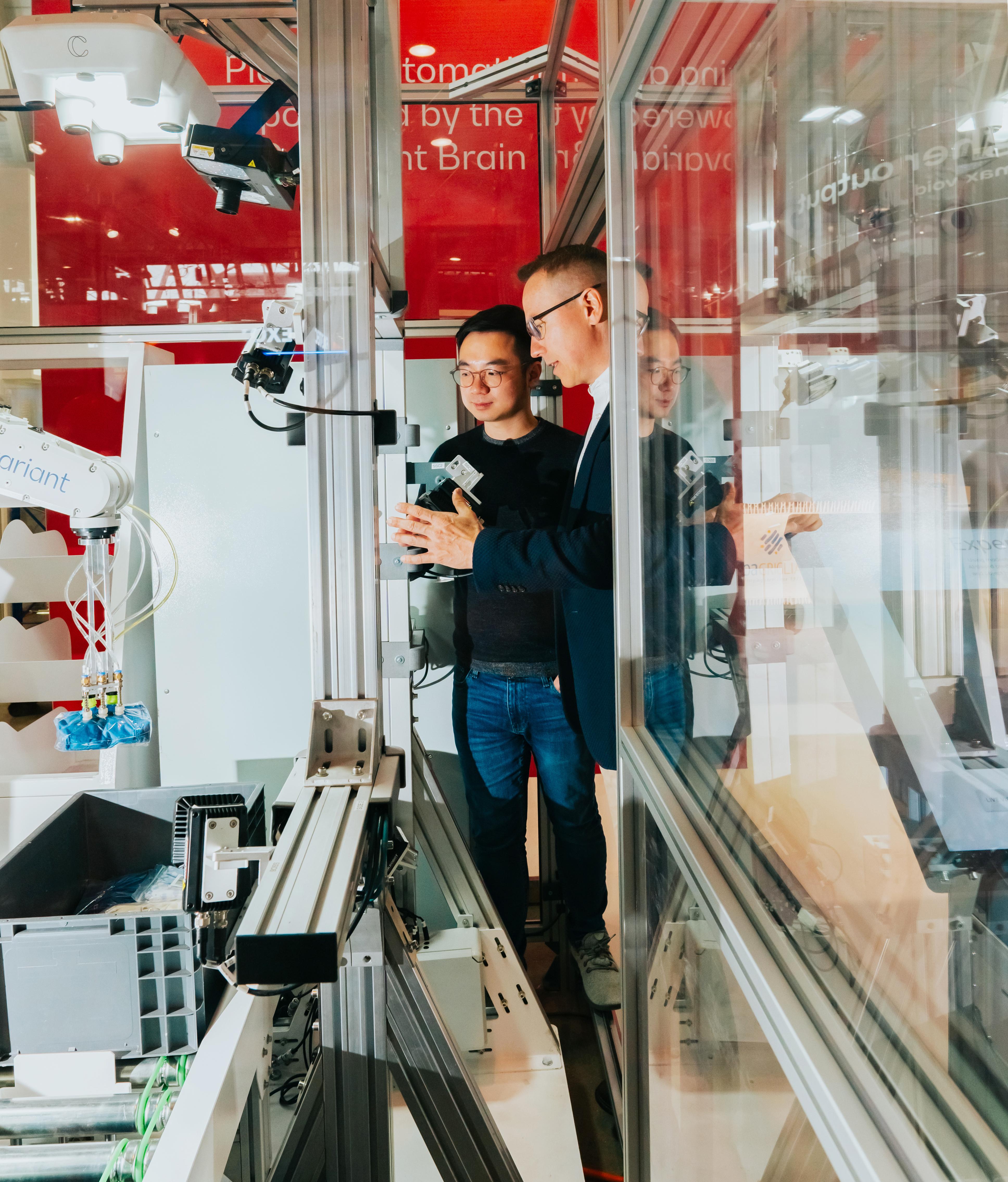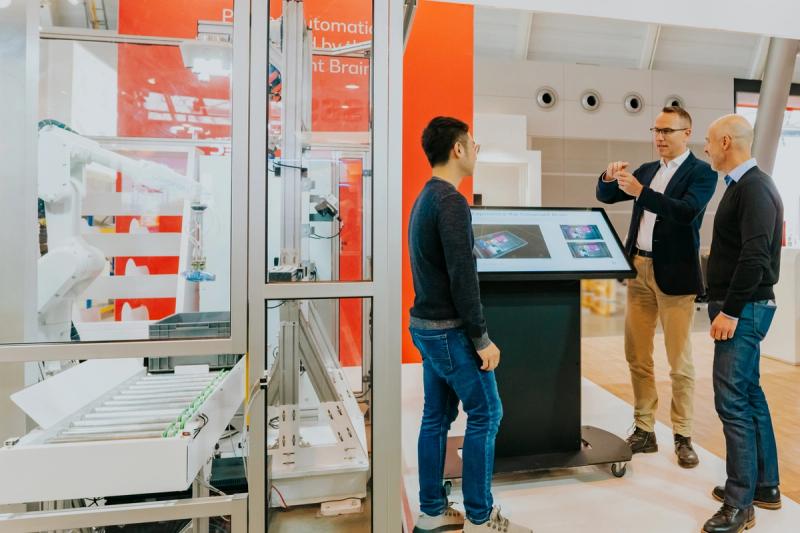The Otto Group, the largest online retailer of European origin, is deploying the world’s most innovative automation strategies to improve the performance and accuracy of its supply chain and deliver an even more reliable experience to its customers.
When people talk about the incredible potential of AI, a majority of the conversation has been focused on its language capabilities. But could something like ChatGPT be applied to robotics?
The answer is yes. ChatGPT is an AI application built on a foundation model. Covariant has taken a similar approach to building a foundation model with reinforcement learning to revolutionize the handling of objects in the physical world.
To build a foundation for future growth, the Otto Group has entered into a long-term strategic relationship with Covariant. In the Otto Group’s fulfillment centers, more than a hundred AI robots will be deployed to handle the order-picking process. The integration of Covariant AI-powered robots has begun in the Haldensleben, optimizing the facility’s warehouse operations
The Otto Group automation journey: Started with the "feet"; now the "hands"
We are in the midst of unprecedented retail transformation. As limitations in the labor market continue to increase while the scale of e-commerce volume also continues to grow, the need for automation has become even more paramount.
To increase efficiency, build better resilience to labor market challenges, and improve the quality of jobs that exist within their facilities, Otto Group has focused in the past on adopting warehouse robotics to automate the “feet”.

Yet the handling of items — picking, placing, and sorting — what we call the “hand” part of the work — has largely remained manual. Robotic arms that could perform picking and placing activities have existed in principle for decades. But they have failed to perform autonomously (until now) due to the complexity and variability of the items flowing through any given fulfillment or distribution center – until now.
The challenge for a picking robot has been that it must manipulate a dynamically changing variety of goods in shape, color, and quantity without master data. Autonomous robotic picking can only be successful at scale when powered by the right type of Artificial Intelligence. Ultimately, you need an AI that enables the robot to see, think, and act based on the unique situation it’s facing.
With the Covariant partnership, the Otto Group is leveraging the first foundation model for robotics to achieve autonomous robotic picking at scale. Raphael Adrian Maier, Group Vice President of Supply Chain Management, explains, “AI Robotics offers us the possibility of responding to several challenges in the area of logistics. The skills shortage can thus be compensated for. But first and foremost, they enable us to continue operating our fulfillment centers close to our customers. This strengthens Europe and even more so Germany as a location for doing business.”
The lightbulb moment: Robots that learn, together
Otto Group Board Member for Service Kay Schiebur and Raphael Adrian Maier recall that while initial meetings were very promising, the decisive step was a visit to the Covariant lab in Emeryville, CA.
Maier comments: "We watched the robot arms sorting objects. This is a familiar activity for people: We can recognize things and know how to pick them up. A machine has to learn that. The way the robots handled an apple was very impressive. At first, the arm was unable to grip it. It, therefore, rolled the apple around a little to get a feel for it, after which it succeeded in lifting it. On its next attempt, it succeeded immediately. We could see that the AI was undergoing a learning process."
What’s unique to Covariant is that rather than building specialized models that are trained on a small number of items, Covariant builds the Covariant Brain, a single foundation model trained on everything. And that ultimately delivers a level of generalization never seen before in e-commerce fulfillment. The Covariant Brain, Covariant’s universal AI platform, has been trained on millions of objects from warehouses around the world. This enables the robots to handle the widest variety of SKUs and items possible, from small cosmetics to apparel polybags to fresh groceries.
Additionally, all Covariant robots learn together as a fleet since they are connected to the same universal AI brain – ensuring that learnings and operational improvements automatically propagate across the entire Otto Group network.
Today, a Covariant induction robot can perform up to 1600 picks per hour — i.e. inducting items onto sorters, conveyors, and auto-baggers. And this performance level is just at the beginning – we expect even more increases in efficiency in the next few years.
Optimizing the warehouse experience: Robots and humans working hand-in-hand
In 2023, the Otto Group’s transformation has taken its start at Hermes Fulfilment’s, the Otto Group’s e-commerce logistics company, Haldensleben site – where the dedicated warehouse team has embraced the integration of Covariant Brain-powered robots.
Employees like Birka Kreibich, Marius Schneider, and Jonas Behrend experience reshaped daily operations at the Hermes Fulfilment warehouse.
Marius Schneider, an operations technician at the Haldensleben site, oversees technical automation systems. “My job is to look after the system; I see a lot of potential in the support robots can provide us. It makes our work easier.” He is embracing the evolution of his responsibilities, welcoming the new challenges. “My new tasks also include programming and maintaining the Covariant robotic stations, as well as rectifying any faults that occur.”
Birka Kreibich works steps away from her new robotic colleague, an AI-powered Covariant Induction station, and eagerly anticipates the day when Covariant robots take over all repetitive tasks. She has been a dedicated member of the Hermes Fulfilment team for 13 years in the individual shipping department, handling items, cross-referencing invoices, and ensuring shipments are ready for dispatch.
Birka sees the robots as essential partners, not replacements: “Our work is physically demanding. With the support of the robots, it will be more varied and ergonomically better for us.”

The integration of AI-powered robotics is transforming the warehouse experience, not just for seasoned logistics professionals, but also significantly reshaping the responsibilities of the next generation of warehouse technicians, like Jonas Behrend, an 18-year-old industrial mechanic apprentice. From programming and maintaining the automated systems to troubleshooting malfunctions, these innovations make the field increasingly attractive for digitally-inclined individuals.
As critical members at the forefront of this technological transformation, Birka, Marius, Jonas, and their teammates provide valuable insights throughout the robot integration planning process to optimize their work environment. This human-robot collaboration is set to drive operational excellence and efficiency — signaling a major leap toward an AI-enhanced future of work.
A joint commitment to the future: Investing in performance and innovation
The vision of this partnership is to have hundreds of Covariant’s AI-powered robotic solutions installed across all Otto Group fulfillment centers.
While the impact of these robotic deployments will be seen on Day One, working with a pioneer like Covariant is a long-term investment. Kay Schiebur stresses that “the point is not just to make logistics a little more effective. It is still largely unforeseeable what further possibilities there will be for the use of general AI in or outside of logistics. However, it is clear that we are facing that future with courage and curiosity."
Schiebur emphasizes that the partnership with Covariant is a typical Otto Group investment, as it resonates with two core values of the company: performance and innovation. “When a difficult market environment prevails, it is important that investments in the future do not fall by the wayside. We are investing here and now in our future viability, in order to strengthen our position as the market leader in Europe.”






